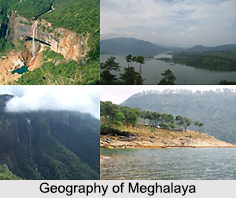 The Pench River flows in the edging areas of Chhindwara and Seoni Districts and merges with the Kanhan River in Nagpur District. The Pench is a tributary of the Banganga and Pench flows from north to south. The river runs across the Pench National Park, thus separating the Pench reserve into two halves of east and west Pench.
The Pench River flows in the edging areas of Chhindwara and Seoni Districts and merges with the Kanhan River in Nagpur District. The Pench is a tributary of the Banganga and Pench flows from north to south. The river runs across the Pench National Park, thus separating the Pench reserve into two halves of east and west Pench.
The Pench Tiger Reserve has derived its name after the Pench River, which flows from north to south across the Reserve. The Reserve is situated on the southern areas of the Satpura hill ranges in the Seoni and Chhindwara districts in the Madhya Pradesh state of India. The topography is undulating, with most of the area enclosed by small hill ranges and abrupt slopes on all the sides.
 The Reserve is situated in an area that holds a noteworthy history of Central India. The natural beauty, richness in flora and fauna and the lovely tumble of the river has appeared in numerous wildlife booksdating back to 17th century; moreover these are the elements Books written in the 19th and early 20th century by famous naturalists like Captain J. Forsyth and Rudyard Kipling`s Jungle Book clearly present the comprehensive panorama of nature`s wealth in this expanse.
The Reserve is situated in an area that holds a noteworthy history of Central India. The natural beauty, richness in flora and fauna and the lovely tumble of the river has appeared in numerous wildlife booksdating back to 17th century; moreover these are the elements Books written in the 19th and early 20th century by famous naturalists like Captain J. Forsyth and Rudyard Kipling`s Jungle Book clearly present the comprehensive panorama of nature`s wealth in this expanse.
The Pench river flowing through the centre of the Reserve is usually dry by April but a number of water pools locally known as `dohs` are found along the course of the river. These serve as waterholes for wild animals. Few perennial springs also exist in the region. Recently a number of earthen ponds and shallow wells have been created thus making well-distributed sources of water all over the reserve.
This article is a stub. You can enrich by adding more information to it. Send your Write Up to content@indianetzone.com















